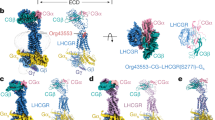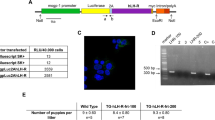Abstract
Oestrogen receptor protein (ER) was detected in 9 of 11 samples of malignant breast tissue and 8 of 9 samples of normal breast tissue. Levels of cytosolic ER (ERc) in malignant breast were 21-1102 fmol mg-1 soluble protein (Kd 1.8 X 10(-9)-3.1 X 10(-8) mol l-1) and those of nucleosolic ER (ERn), 13-526 fmol mg-1 soluble protein (Kd 2.1 X 10(-9)-1.4 X 10(-8) mol l-1). In normal breast tissue ERc levels were 33-640 fmol mg-1 soluble protein (Kd 1.3 X 10(-10)-3.2 X 10(-9) mol l-1), ERn was detected in only 2 samples, 8 and 87 fmol mg-1 soluble protein with Kd 3.2 X 10(-9) and 1.4 X 10(-9) l mol-1 respectively. 17 alpha-ethinyl-13 beta-ethyl-17 beta-hydroxy-4,15-gonadiene-3-one (gestodene), a new synthetic progestogen displaced 3H-oestradiol (3H-E2) from both ERc and ERn in malignant tissue but not in normal breast, or these receptors from endometrial tissue. In competition studies gestodene was approximately 3 times more effective in displacing 3H-E2 from ERc and ERn in malignant breast tissue than the natural ligand. Quantitation of ER by gestodene were ERc, 12-1134 fmol gestodene bound mg-1 soluble protein (Kd 1 X 10(-9)-8.1 X 10(-9) mol l-1); ERn, 17-531 fmol gestodene bound mg-1 soluble protein (Kd 1.6 X 10(-9)-1.1 X 10(-8) mol l-1). L-13-ethyl-17 alpha-ethinyl, 17 beta-hydroxy-gonen-3-one (levonorgestrel) showed no binding to ER in malignant breast, normal breast or endometrial tissue. In circulation both gestodene and levonorgestrel displaced E2 from sex hormone binding globulin more than any of the androgens tested. These results suggest that gestodene is a progestogen with oestrogenic and/or antioestrogenic properties and provide strong evidence for differences in ER from malignant and normal breast tissue.
This is a preview of subscription content, access via your institution
Access options
Subscribe to this journal
Receive 24 print issues and online access
$259.00 per year
only $10.79 per issue
Buy this article
- Purchase on Springer Link
- Instant access to full article PDF
Prices may be subject to local taxes which are calculated during checkout
Similar content being viewed by others
Rights and permissions
About this article
Cite this article
Iqbal, M., Colletta, A., Houmayoun-Valyani, S. et al. Differences in oestrogen receptors in malignant and normal breast tissue as identified by the binding of a new synthetic progestogen. Br J Cancer 54, 447–452 (1986). https://doi.org/10.1038/bjc.1986.196
Issue Date:
DOI: https://doi.org/10.1038/bjc.1986.196



